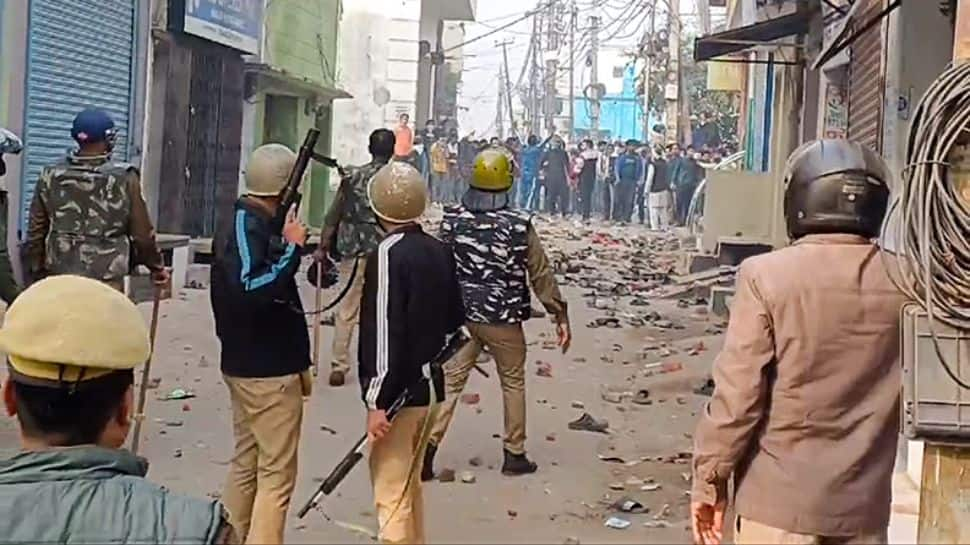Violence erupted in Sambhal district, Uttar Pradesh, on Sunday following a disputed survey of a mosque, leading to three fatalities and several injuries. In response to the unrest, local authorities enforced a 24-hour internet ban in the Sambhal Tehsil area and declared schools would remain closed.
The situation worsened as the death toll from the violence increased to three, with many others, including approximately 20 law enforcement officers, injured. Protesters, opposing a court-ordered survey of a Mughal-era mosque, clashed with the police, setting vehicles on fire and hurling stones. The police responded with tear gas and baton charges to disperse the crowd. Here are the 10 key updates on the incident:
1. Internet Shutdown and School Closures
Sambhal District Magistrate, Rajendra Pensia, ordered the suspension of internet services for 24 hours in Sambhal Tehsil to control the situation. The decision will be reassessed after 24 hours. Additionally, all schools in the area will remain closed as a precautionary measure.
2. Casualties and Injuries
The violence left three individuals dead: Naeem, Bilal, and Nauman. Over two dozen people, including police officers and government officials, were injured in the clashes. Four senior police officers, 20 policemen, and a deputy collector were among the seriously hurt, with a police PRO suffering a gunshot wound to the leg.
3. Magisterial Inquiry Ordered
Following the violence, a magisterial inquiry was ordered to investigate the circumstances surrounding the incident. Local authorities are working to determine the cause of the clash and identify those responsible for the violence.
4. Clashes Erupt During Mosque Survey
The unrest started when a team arrived at the Shahi Jama Masjid for a court-ordered survey. Initially, the survey proceeded without incident, but tensions quickly escalated when a large group gathered and began throwing stones at security personnel. Police responded by using tear gas to disperse the crowd.
5. Survey Background and Legal Context
The survey was part of a legal process stemming from a petition filed by senior advocate Vishnu Shankar Jain. The petition claimed that the Shahi Jama Masjid, built in 1529, was originally a Hindu temple, Harihar Mandir, that had been demolished to make way for the mosque. The local court had ordered a fresh survey to examine the claims.
6. Police Response and Security Measures
Superintendent of Police, Krishan Bishnoi, addressed the media, defending the police’s handling of the situation. He clarified that the police forces were deployed in accordance with orders from the District Magistrate and denied any intelligence failure, stating that the violence was an unexpected escalation after a community gathered overnight.
7. Escalation of Violence
What started as a peaceful survey soon turned violent as the crowd grew to about 2,000 to 3,000 people. Protesters began throwing stones at the police and the survey team, prompting the security forces to deploy tear gas and use pellet guns. Some vehicles were set on fire, and several people were arrested for their involvement in stone-pelting.
8. Opposition Parties React
Samajwadi Party President, Akhilesh Yadav, condemned the violence, accusing the ruling Bharatiya Janata Party (BJP) and the government of orchestrating the unrest to divert attention from allegations of electoral malpractice. Yadav’s comments added a political dimension to the incident, fueling further debate in the region.
9. Timeline of Earlier Surveys
The initial survey of the Shahi Jama Masjid took place on November 19, following a local court’s instructions. The court’s directive was based on the claim that the mosque was built after the demolition of a Hindu temple in the 16th century. The mosque has since been a focal point of tension, with locals opposing the survey and raising questions about its historical significance.
10. Legal Process
The ongoing legal proceedings, led by Vishnu Shankar Jain, have prompted the court to order a detailed survey. The survey includes videography and photography of the mosque, with a report expected by the next hearing on November 29. The case has drawn in multiple parties, including the central and state governments, the mosque committee, and local authorities.

